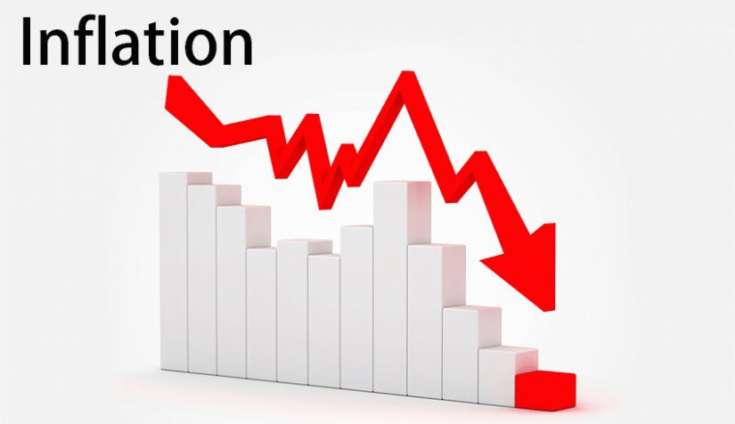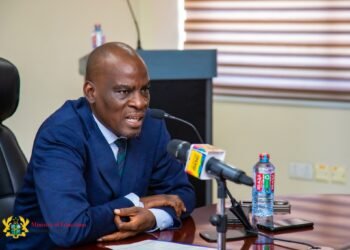The Bank of Ghana (BoG) has revised its end-year inflation target for 2025 from an earlier projection of 16% down to 12%.
The Bank of Ghana (BoG) Governor Dr. Johnson Asiama made this announcement, expressing strong confidence that the Central Bank’s monetary tightening measures—combined with ongoing fiscal consolidation efforts by the government—can deliver this goal.
This downward revision marks a significant shift in the BoG’s inflation outlook and reinforces its commitment to macroeconomic stability at a time when inflation remains one of the most pressing challenges for the Ghanaian economy. If successful, achieving a 12% inflation rate by December 2025 would represent the country’s lowest rate in four years and signal a turning point in Ghana’s economic recovery agenda.
A Calculated but Ambitious Adjustment
The revised 12% target reflects growing optimism within the BoG, underpinned by recent monetary policy actions and an improving inflation trend. Inflation fell for a third consecutive month in March 2025, reaching 22.4%, down from 23.1% in February. This consistent easing has emboldened policymakers, suggesting that price pressures—especially those related to food and energy—may be responding to interventions taken over the past year.
At its last Monetary Policy Committee (MPC) meeting, the BoG raised the policy rate by 100 basis points to 28%. The move was aimed at strengthening the cedi, reducing inflation expectations, and tightening liquidity conditions in the economy. According to Dr. Asiama, this policy action, combined with complementary fiscal discipline, should help anchor inflation expectations in the months ahead.
Dr. Asiama also hinted at the possibility of further action when the MPC reconvenes on May 22, stating, “The Bank of Ghana will take the required actions based on our data.” This leaves the door open for another rate hike if inflation does not fall quickly enough to keep pace with the new 12% target.

Exchange rate stability is a key pillar of the BoG’s strategy. The cedi has come under pressure in recent months, driven by seasonal import demand and global interest rate developments. However, Dr. Asiama pointed to signs of stabilization in the currency market, supported by the BoG’s forex interventions and remittance inflows. A more stable cedi reduces the cost of imported goods and helps curb inflationary pass-through from external shocks.
Moreover, food inflation—a major driver of headline inflation—has shown signs of moderating, thanks to improved domestic supply and easing global food prices. Policymakers are banking on these favorable trends to persist, reinforcing the effects of tighter monetary policy.
Support from the IMF—but Caution Lingers
The International Monetary Fund (IMF) has lent support to the BoG’s stance. In a recent statement following Ghana’s staff-level agreement, the IMF emphasized that continued monetary policy tightening, alongside fiscal consolidation, is essential to restoring price stability. According to the Fund’s Africa Regional Economic Outlook, Ghana’s inflation is projected to end 2025 at 17.5%—a figure notably higher than both the BoG’s and the government’s forecasts.
The 2025 Budget presented by Finance Minister Dr. Ato Forson anticipates a year-end inflation rate of 11.9%. While this target aligns closely with the BoG’s revised figure, some economists, including Professor Peter Quartey, have warned that it may be overly optimistic. Prof. Quartey noted that structural challenges in the economy, including food supply chain bottlenecks and exchange rate volatility, could undermine the effort.
Meanwhile, the move to lower the inflation target is not without risks. If inflation proves more stubborn than anticipated, the BoG may have to continue raising interest rates, potentially dampening growth and putting pressure on businesses and consumers. There is also the risk that inflation expectations could become unanchored if the target is perceived as unrealistic.
Nonetheless, the BoG’s revised target sends a strong signal of its commitment to restoring price stability. It also sets the tone for stronger coordination between monetary and fiscal authorities—a critical ingredient for long-term economic resilience.
As the May 22 MPC meeting approaches, all eyes will be on the BoG’s next move. The effectiveness of its strategy will depend not only on domestic policy discipline but also on global economic developments, including commodity prices and international interest rate trends.
In the end, whether the 12% target is achieved or not, the BoG’s proactive stance marks a positive step toward rebuilding confidence in Ghana’s economic management.
READ ALSO: Ghana’s 91-Day Treasury Yield Falls to 15.32% Amid Auction Success




















